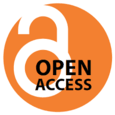In Silico Assessment of Post Translational Modifications Caused by NRAS Gene SNPs in Acute Myeloid Leukemia
Post Translational Modifications Caused by NRAS Gene
DOI:
https://doi.org/10.54393/fbt.v3i01.33Keywords:
AML, NRAS, In silico, nsSNPs, PTMAbstract
Acute myeloid leukemia (AML) is a blood cancer and a malignant disorder of the bone marrow in which hematopoietic precursors are ceased at an early stage of development, preventing them from differentiating. The NRAS gene plays a vital role in regulating cell division. The mutation in this gene leads to an increased activity of the RAS pathway, increased proliferation and decreased apoptosis rates which causes AML. Objective: To identify the deleterious SNPs involved in AML and to further analyze them using bioinformatics tools. Methods: The missense nsSNPs (Q61H, Q61L, G13V, G13R, and G12A) of NRAS were retrieved from NCBI databases. Results: Using in silico analysis, it was found that these pathogenic SNPs could disrupt the protein stability. These mutations were present in the conserved region and had the potential to significantly alter the protein's secondary structure and impair its functionality. The structural effect of mutations was observed by generating 3D models. Post-translational modifications (PTMs) of proteins refers to the chemical modifications that occur after a protein is formed to make it functionally capable. Analyzing PTMs via in silico analysis revealed that missense mutations affect protein functionality. The level of methylation was significantly high in AML patients. These SNPs might affect additional proteins which are functionally associated. Conclusions: The highlighted SNPs could be suitable targets for future research on proteins, biological markers, and medical diagnosis.
References
Seth R and Singh A. Leukemias in Children. Indian Journal of Pediatric. 2015 Sep; 82(9): 817-24. doi: 10.1007/s12098-015-1695-5.
Zimmermann C, Yuen D, Mischitelle A, Minden MD, Brandwein JM, Schimmer A, et al. Symptom burden and supportive care in patients with acute leukemia. Leukemia Research. 2013 Jul; 37(7): 731-6. doi: 10.1016/j.leukres.2013.02.009.
Short NJ, Rytting ME, Cortes JE. Acute myeloid leukaemia. The Lancet. 2018 Aug; 392(10147): 593-606. doi: 10.1016/S0140-6736(18)31041-9.
Howlader NN, Noone AM, Krapcho M, Garshell J, Miller D, Altekruse SF, et al. SEER cancer statistics review, 1975–2012. National Cancer Institute. 2014 Nov.
Song X, Peng Y, Wang X, Chen Y, Jin L, Yang T, et al. Incidence, survival, and risk factors for adults with acute myeloid leukemia not otherwise specified and acute myeloid leukemia with recurrent genetic abnormalities: analysis of the surveillance, epidemiology, and end results (SEER) database, 2001–2013. Acta Haematologica. 2018 Feb; 139(2): 115-27. doi: 10.1159/000486228.
Cazzola M. Introduction to a review series: the 2016 revision of the WHO classification of tumors of hematopoietic and lymphoid tissues. Blood, The Journal of the American Society of Hematology. 2016 May; 127(20): 2361-4. doi: 10.1182/blood-2016-03-657379.
Tallman MS, Wang ES, Altman JK, Appelbaum FR, Bhatt VR, Bixby D, et al. Acute myeloid leukemia, version 3.2019, NCCN clinical practice guidelines in oncology. Journal of the National Comprehensive Cancer Network. 2019 Jun;17(6): 721-49. doi: 10.6004/jnccn.2019.0028.
Döhner H, Weisdorf DJ, Bloomfield CD. Acute myeloid leukemia. New England Journal of Medicine. 2015 Sep; 373(12): 1136-52. doi: 10.1056/NEJMra1406184.
Davis AS, Viera AJ, Mead MD. Leukemia: an overview for primary care. American Family Physician. 2014 May; 89(9): 731-8.
Eisfeld AK, Schwind S, Hoag KW, Walker CJ, Liyanarachchi S, Patel R, et al. NRAS isoforms differentially affect downstream pathways, cell growth, and cell transformation. Proceedings of the National Academy of Sciences. 2014 Mar; 111(11): 4179-84. doi: 10.1073/pnas.1401727111.
Deller MC, Kong L, Rupp B. Protein stability: a crystallographer's perspective. Acta Crystallographica Section F: Structural Biology Communications. 2016 Feb; 72(2): 72-95. doi: 10.1107/S2053230X15024619.
Pundir H, Joshi T, Joshi T, Sharma P, Mathpal S, Chandra S, et al. Using Chou’s 5-steps rule to study pharmacophore-based virtual screening of SARS-CoV-2 Mpro inhibitors. Molecular Diversity. 2021 Aug; 25: 1731-44. doi: 10.1007/s11030-020-10148-5.
Asiri A, Alwadaani D, Umair M, Alhamoudi KM, Almuhanna MH, Nasir A, et al. Pancytopenia, recurrent infection, poor wound healing, heterotopia of the brain probably associated with a candidate novel de novo CDC42 gene defect: expanding the molecular and phenotypic spectrum. Genes. 2021 Feb; 12(2): 294. doi: 10.3390/genes12020294.
Khosravi SZ, Moonesi M, Moradabadi A, Rajaeinejad M, Heidari MF, Noroozi-Aghideh A. Rapid Detection of N-RAS Gene Common Mutations in Acute Myeloid Leukemia (AML) Using High Resolution Melting (HRM) Method. Asian Pacific Journal of Cancer Prevention: APJCP. 2022 Jan; 23(1): 125. doi: 10.31557/APJCP.2022.23.1.125.
Schubbert S, Shannon K, Bollag G. Hyperactive Ras in developmental disorders and cancer. Nature Reviews Cancer. 2007 Apr; 7(4): 295-308. doi: 10.1038/nrc2109.
Akram AM, Chaudhary A, Kausar H, Althobaiti F, Abbas AS, Hussain Z, et al. Analysis of RAS gene mutations in cytogenetically normal de novo acute myeloid leukemia patients reveals some novel alterations. Saudi Journal of Biological Sciences. 2021 Jul; 28(7): 3735-40. doi: 10.1016/j.sjbs.2021.04.089.
Behairy MY, Soltan MA, Adam MS, Refaat AM, Ezz EM, Albogami S, et al. Computational analysis of deleterious SNPs in NRAS to assess their potential correlation with carcinogenesis. Frontiers in Genetics. 2022 Aug; 13: 872845. doi: 10.3389/fgene.2022.872845.
Capriotti E, Fariselli P, Rossi I, Casadio R. A three-state prediction of single point mutations on protein stability changes. BMC Bioinformatics. 2008 Mar; 9(2): 1-9. doi: 10.1186/1471-2105-9-S2-S6.
Witham S, Takano K, Schwartz C, Alexov E. A missense mutation in CLIC2 associated with intellectual disability is predicted by in silico modeling to affect protein stability and dynamics. Proteins: Structure, Function, and Bioinformatics. 2011 Aug; 79(8): 2444-54. doi: 10.1002/prot.23065.
Khan S and Vihinen M. Spectrum of disease-causing mutations in protein secondary structures. BMC Structural Biology. 2007 Dec; 7: 1-8. doi: 10.1186/1472-6807-7-56.
Kishore S, Jaskiewicz L, Burger L, Hausser J, Khorshid M, Zavolan M. A quantitative analysis of CLIP methods for identifying binding sites of RNA-binding proteins. Nature Methods. 2011 Jul; 8(7): 559-64. doi: 10.1038/nmeth.1608.
Aftab A, Khan R, Shah W, Azhar M, Unar A, Jafar Hussain HM, et al. Computational analysis of Cyclin D1 gene SNPs and association with breast cancer. Bioscience Reports. 2021 Jan; 41(1): BSR20202269. doi: 10.1042/BSR20202269.
Bhattacharya M, Hota A, Kar A, Chini DS, Malick RC, Patra BC, et al. In silico structural and functional modelling of Antifreeze protein (AFP) sequences of Ocean pout (Zoarces americanus, Bloch & Schneider 1801). Journal of Genetic Engineering and Biotechnology. 2018 Dec; 16(2):721-30. doi: 10.1016/j.jgeb.2018.08.004.
Kim Y, Kang C, Min B, Yi GS. Detection and analysis of disease-associated single nucleotide polymorphism influencing post-translational modification. BMC Medical Genomics. 2015 Dec; 8(2): 1-8. doi: 10.1186/1755-8794-8-S2-S7.
Trougakos IP, Sesti F, Tsakiri E, Gorgoulis VG. Non-enzymatic post-translational protein modifications and proteostasis network deregulation in carcinogenesis. Journal of Proteomics. 2013 Oct; 92: 274-98. doi: 10.1016/j.jprot.2013.02.024.
Joly JH, Lowry WE, Graham NA. Differential Gene Set Enrichment Analysis: A statistical approach to quantify the relative enrichment of two gene sets. Bioinformatics. 2020 Nov; 36(21): 5247-54. doi: 10.1093/bioinformatics/btaa658.
Chin CH, Chen SH, Wu HH, Ho CW, Ko MT, Lin CY. cytoHubba: identifying hub objects and sub-networks from complex interactome. BMC Systems Biology. 2014 Dec; 8(4): 1-7. doi: 10.1186/1752-0509-8-S4-S11.
Downloads
Published
How to Cite
Issue
Section
License
Copyright (c) 2023 Futuristic Biotechnology

This work is licensed under a Creative Commons Attribution 4.0 International License.
This is an open-access journal and all the published articles / items are distributed under the terms of the Creative Commons Attribution License, which permits unrestricted use, distribution, and reproduction in any medium, provided the original author and source are credited. For comments editor@fbtjournal.com











